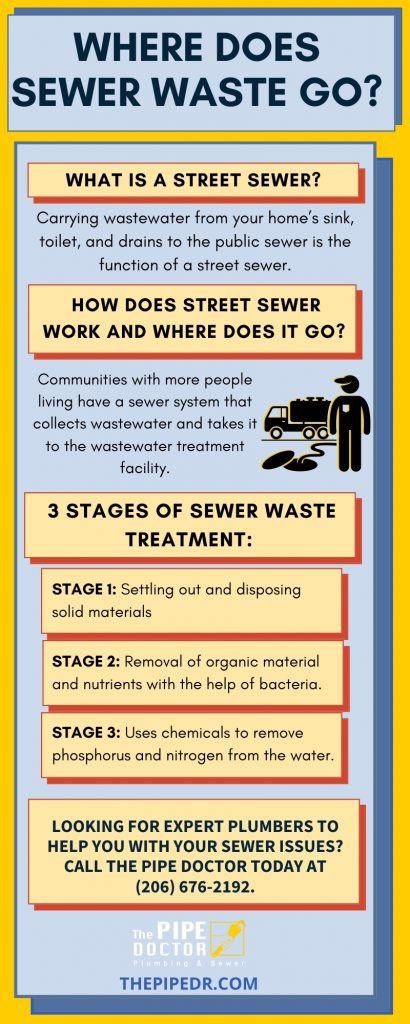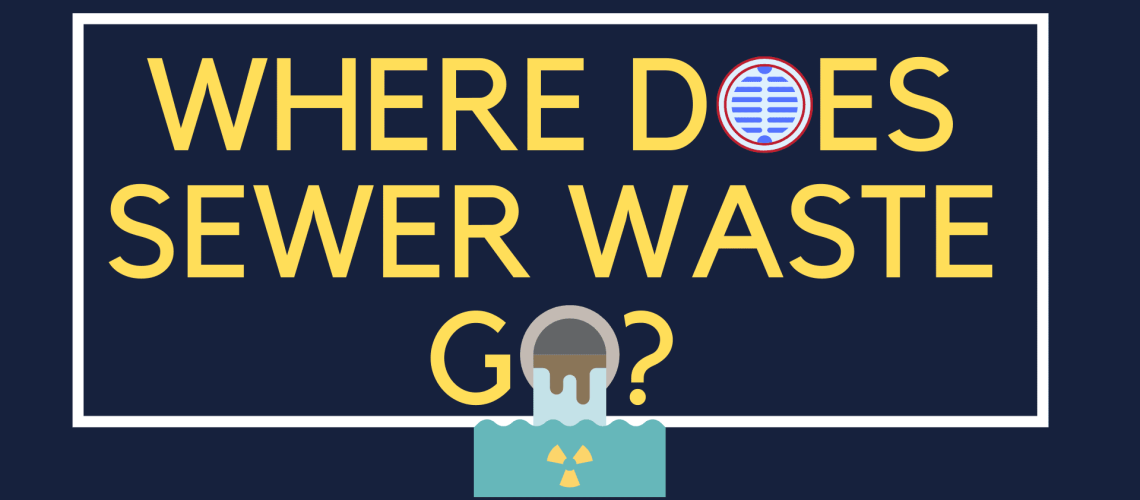Being a homeowner means being responsible for monitoring the functionality of the sewer line from your home to the street. While it’s true that the pipe connecting your toilets to your public sewer line is easy to ignore, any clogs or breaks in between these connections may possibly lead to costly sewer excavation and sewer replacement. In order for you to save time and money, let’s get to know more about your street sewer. Pay attention to how it works, and where it goes so you don’t need to worry about sewer problems in the future.

Related Articles
What Is a Street Sewer?

Carrying wastewater from your home’s sink, toilet, and drains to the public sewer is the function of a street sewer. Owning a home means you own a street sewer to the main public sewer line and it is located under a street near your home. A lateral is a sewer pipe that connects your house to the main municipal sewer line under the street. It is usually buried below the frost line in a trench that is properly prepared and sloped. The slope is an important aspect of this process because it will determine the efficiency of how the pipe drains by force of gravity.
Installing a lateral involves 5 basic steps that are based on the local code authority and must gain approval after one or more inspections:
1. The first step in the installation process is to determine how far the pipe needs to go and the depth of each end of the pipe. If you own a home, the sewer pipe usually starts where the home drain exits the house foundation. Connecting the sewer line to the city branch or main, also known as a tap, involves sloping the line downhill.
2. The initial slope calculation results from the elevations and the length of the pipe. The reason why the slope calculation is very crucial during installation lies on its efficiency to drain properly. If the slope is too steep, it will cause the liquids to run faster than the solids, leading to clogs. However, if it is too shallow not enough velocity will be produced for proper drainage.
3. When trenching for a sewer lateral, exercise caution to avoid unnecessary soil disruption. Opt for a narrow trench to minimize soil disturbance, but ensure you have accurate information on the pipe’s termination point. Hence a wider trench is necessary. Make sure that the bottom of the trench is smooth and it’s best to put a bedding material such as sand to continuously support the pipe.
4. Installing a sewer pipe should be done one section at a time, starting at the lower end and working up to the higher elevation. A pipe size of 4 inches is the suggested standard pipe line for residential lines. This depends on the local code of each city because they specify the required pipe material and size.
5. Backfilling the trench is only permitted once the sewer lateral is fully installed and successfully passes the final inspection.
How does street sewer work and where does it go?
Communities with more people living have a sewer system that collects wastewater and takes it to the wastewater treatment facility.
As pipes from each house flow to a sewer main, it eventually run down the middle of the street. The sewer main flows into progressively larger pipes until it reaches the wastewater treatment plant. This is usually located in a low lying area because it is completely gravity-powered. Some sewer systems have grinder-pump or lift stations to move the wastewater up over a hill. When the water reaches the wastewater treatment plant, it undergoes 3 stages of treatment:
1. First stage: Primary treatment. The function is similar to a septic tank where it allows solid to settle out of the water and the scum to rise. Collect and dispose of the solid material either in a landfill or an incinerator.
2. Second stage: Secondary treatment. This involves removal of organic material and nutrients with the help of bacteria. There are settling tanks where wastewater flows and bacteria settle out. The second stage can remove up to 90% of solids and organic materials from the wastewater.
3. Third stage: Tertiary treatment. This depends on the community and the composition of wastewater. The third stage typically uses chemicals to remove phosphorus and nitrogen from the water and will also include filter beds and other types of treatment under this stage. Chlorine is then added to the water to kill any remaining bacteria before it is discharged.
After completing all three stages and ensuring that the treated waste meets each state’s regulatory standards, the water can be released into a nearby water body for agricultural or drinking purposes. Treated waste as a drinking water source will still undergo further water treatment to remove disease-causing agents. Most public drinking systems use different methods of water treatment to provide safe drinking water for their communities.
Looking for Expert Plumbers to Help You with your Sewer Issues? Call The Pipe Doctor!
The Pipe Doctor provides different sewer services such as sewer repair, sewer cleaning, sewer replacement, and sewer inspection. If you are looking for affordable and reliable plumbing and sewer experts, don’t hesitate to give us a call or shoot us an email!
The Pipe Doctor
12345 Lake City Way Ste 311 Seattle, WA 98125
(206) 676-2192
thepipedr@gmail.com


5 Responses